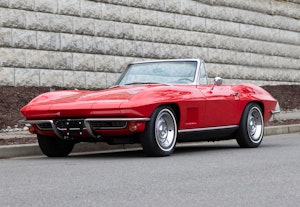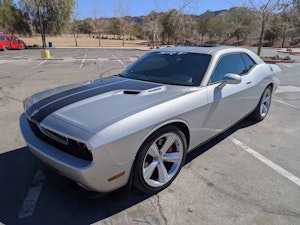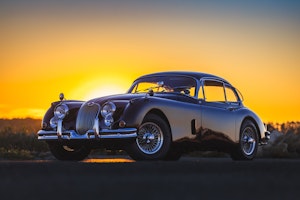Media | Articles
Preserving the NYPD’s Motorized Past
(Editor’s Note: In honor of National Law Enforcement Appreciation Day on Jan. 9, writer Benjamin Preston takes a look at a group of current and former New York Police Department officers who restore classic police cars.)
Let’s say you’ve spent a couple decades busting drunk drivers, chasing robbers or sending wise guys to prison. Finding something to do after you retire that doesn’t bore you to death can be tricky. In New York City, there is one pastime that allows some former officers of the country’s largest police force to stay engaged with department while they learn about a specific part of NYPD history: restoring old cop cars.
I met a group of mostly retired NYPD police officers recently in Astoria, Queens, who had formed a club dedicated to police car restoration. They said there are about 15 members in their club, all people who have or have had some professional involvement with the NYPD. About a dozen historic cruisers were parked in a gleaming row beneath the Triborough Bridge, just across the East River from Ward’s Island and Manhattan. These were men who had seen it all, yet none of them were old enough to have used cars of those vintages when they were on the force.
Larry King, for example, retired as a captain in the traffic division in 2002. He now owns a ’71 Plymouth Fury dressed in the NYPD’s pre-1973 green and black paint scheme, but when he joined the force, the car was already a decade out of date. He said his first cruiser was a blue and white ’82 Plymouth Fury, the boxy type many may remember from the days when Ed Koch was mayor. More recently, most of them drove modern Chevrolet Impalas and Ford Crown Victorias. Today, even those are being phased out in favor of new Ford Tauruses and Escapes. But those cars are all fleet white with plain blue lettering, not the richer colors of years ago, when police cars were painted in unique hues, depending on their use.
Al Roman, a retired detective from the Bronx narcotics division, brought a 1940 Plymouth Business Coupe to Astoria, a car with almost Art Deco styling dressed in green, black and white. The doors had “23” painted on them, for the 23rd Precinct – Spanish Harlem – Roman’s neighborhood.
Marketplace
Buy and sell classics with confidence
“The old Plymouth is way different from the cruiser I drove,” he said. “There’s no a/c, no power steering, no power brakes and it has a manual transmission.”
It’s also a two-seater, a feature all NYPD police cars had until the late ’50s, said Joe Marino, Sr., another member of the club. He and his son, Joe Marino, Jr., restored a 1958 Ford sedan, one of the first 4-door cruisers the department bought, he said. Before that, the cruisers were all 2-door models.
“If officers needed to transport a prisoner, they called the wagon,” he said, referring to the paddy wagons made famous by the film noir genre.
All of the cars club members own have a few things in common. First, they’re all restored to exact, period-correct NYPD standards. The Marinos’ Ford has a vintage – and very difficult to find – underhood siren and single rotating red roof light. Cars like Chris McSweeney’s ’65 Plymouth Fury and Joe Lentini’s ’65 Chevrolet Biscayne have refurbished, chrome-plated sirens mounted on the roof. They’re the kind that have a reciprocating flap inside that makes the sound of the siren wail vary, a feature that made them temperamental in cold weather. Club members explained that officers used to reach out the window and whack them with nightsticks to get the flap moving, so there aren’t many left that are still in good working order. The pre-’73 cars are painted Envision Green, Coca-Cola White and gloss black; the exact colors that dressed NYPD cruisers in that era.
“Everything has to be authentic because these guys are so detail oriented,” King said, adding that archival photos were a big help in figuring out how things were supposed to look. “I feel like we’re sort of like Smithsonian curators. We’re maintaining the past for the future.”
Second, the cars in the club’s collection are all the lowest form of automobile available in each particular model. As with Roman’s ’40 Plymouth, you won’t find many old NYPD cruisers equipped with power steering, power brakes, air conditioning or FM radios. The seats are all plain, vinyl-covered benches.
“The NYPD didn’t even put air conditioning in its cars until 1974,” Marino explained.
Most of the cars were equipped with an extra speedometer; the analog type used to clock speeders before radar was in use. But only the highway patrol cars got the fancy, perfectly-calibrated units.
The guys who have gotten involved with this particular club are, with one exception, retired or active NYPD officers. The one who isn’t – Michael Gorgia, a longtime city bus and police car mechanic – is currently the man in charge of the NYPD’s vast fleet. Although they’re all NYPD-affiliated, there tend to be three types among club members: the ones who bought cruisers that were already refurbished, others who put their efforts into restoring one particular car and the guys who have multiple police cars in their collections, typically along with other classic cars and hot rods.
Roman, an example of the third category, has a ’65 Chevrolet Bel Air, a ’68 Plymouth Fury, an ’86 Dodge Diplomat, an ’89 Chevrolet Caprice and a ’95 Caprice station wagon. And they’re all dressed as different units’ cars. The ’65 Chevy wears 41st Precinct numbers, the ’68 Plymouth the 75th and the ’86 Dodge the 43rd. The ’89 Caprice is a Transit Police vehicle, from the days when the city’s transit and housing departments had their own police forces. The wagon is from Highway 2, which Roman said was the original bomb unit.
The guys who picked up cars just to stay connected with the department said they had learned a lot. The NYPD, they said, always had a way of picking accessory equipment – sirens, radios, lights and the like – that was different from the sort being used in most other parts of the country.
“The most difficult of the restoration was finding equipment for the car,” McSweeney said. “Most of the stuff you see on these cars was spec’d out for the New York City Police Department, so it’s almost impossible to find.”
Of course, being a retired cop has plugged them into a parts network most people don’t have access to. The Internet is a good resource for cars and parts, they said, but when a local police department needs to get rid of some old parts, it can help to know someone inside.
Another challenge – and undoubtedly a big reason why the curators of this slice of history are almost exclusively affiliated with the police department – is considering the NYPD’s image when the cars are out on display. Gorgia said they all minded their Ps and Qs when driving the old police cars, even though it was clear from looking at the cars that they were no longer part of the department’s current fleet.
Maintaining and showing off old police cars is as much a goodwill mission as it is a hobby. Marino said the police department often asks club members to bring their cars to parades, retirement ceremonies and funeral processions. Children, retired cops and sometimes, a few of the one-time officers noted, even people who had taken a rather unpleasant ride in the back of one of the now-classic cars – they all stop to admire when the old cars are out on the town. As a group of us talked over the open hood of Lentini’s ’65 Chevy, a young boy stopped by to peered inside the car. He was wide-eyed, cooing, “Cool!” under his breath.
“We sort of represent the department as unofficial ambassadors, so everyone takes it seriously,” King said. “In light of today’s times, when police aren’t necessarily looked upon in a favorable light, this is a good way to connect with people in a positive way.”
20170725095422)









